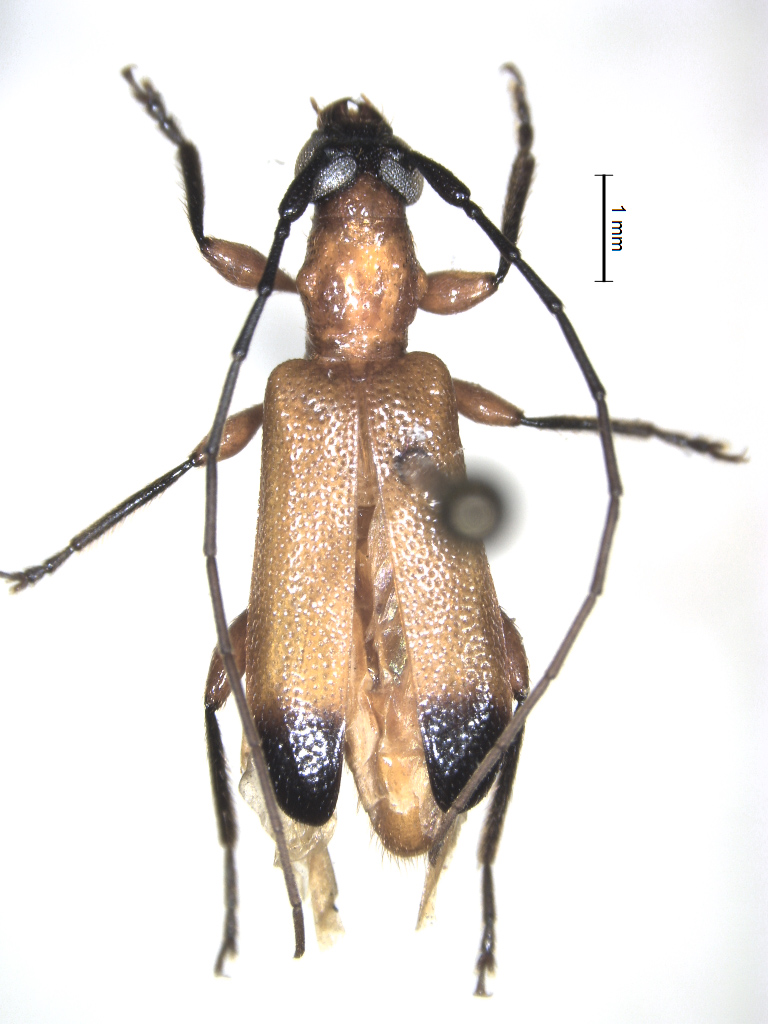| T O P I C R E V I E W |
| amitavaeco |
Posted - 26/03/2017 : 14:31:43

289.04 KB
Is it Obrium posticum Gahan, 1894
Collected from Central India
Size 8 mm |
| 2 L A T E S T R E P L I E S (Newest First) |
| amitavaeco |
Posted - 28/03/2017 : 10:55:44
Thank You Xavier Sir.
Description of O. posticum by Gahan 1906:165 Fauna of British India is matching with the specimen.
Also It is a new record to India I think. |
| Xavier |
Posted - 26/03/2017 : 19:27:10
Obrium posticum, sp. n.
Fulvo-testaceum; capitis fronte, pedibus (dimidiis basalibus femorum exceptis), elytrorumque apicibus piceo-nigris; antennis articulis 4 basalibus nigris, ceteris obscure fulvis.
Long. 9 mm.
Mandalay. One example.
This species has the general appearance of Obrium cantharinum, Linn. It is of about the same size; and the punctuation is very similar in the two species. It may be distinguished by the black front of the head, the black apex of the elytra and the black legs. The prothorax appears slightly broader, in proportion to the size of the insect, than in 0. cantharinum; and the tubercle on the posterior median part of the disk is almost quite obsolete.
Original description from Gahan(1894)
Black front and legs, apex of elytron (...), it seems ok. I have not seen the holotype of this species.
|
|
|


